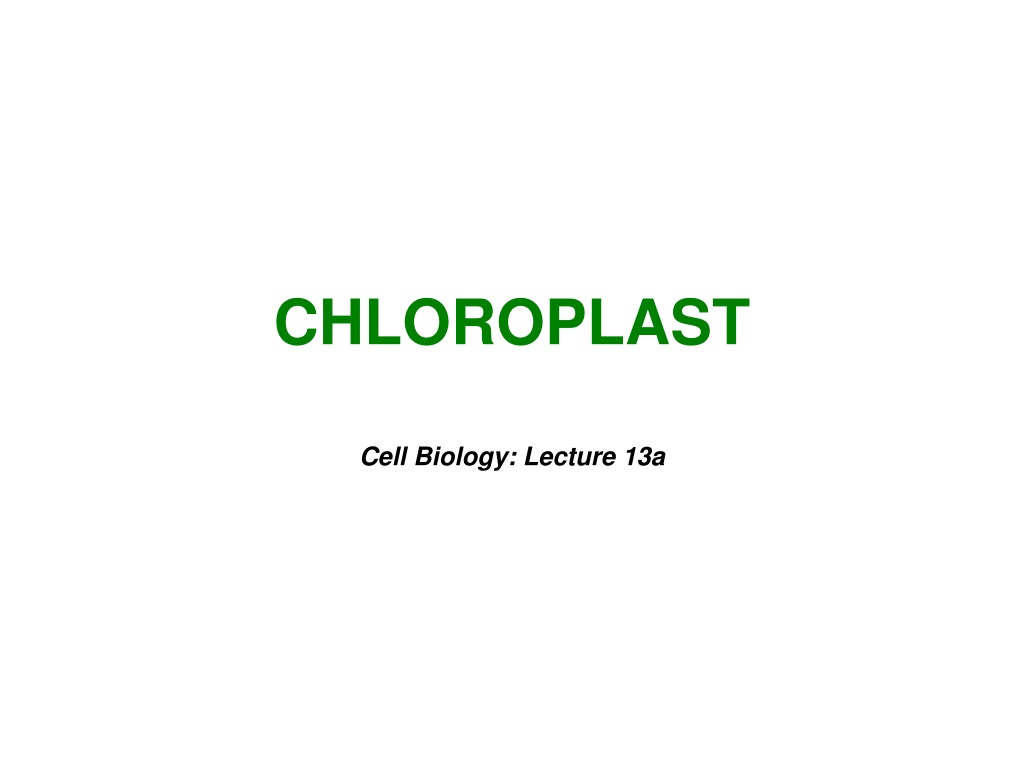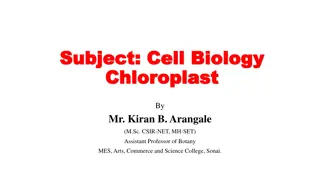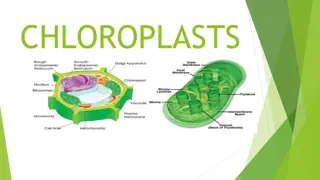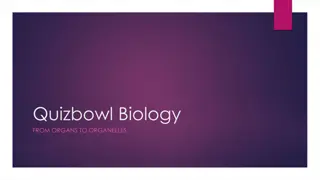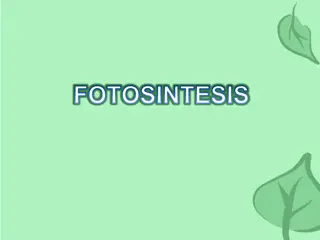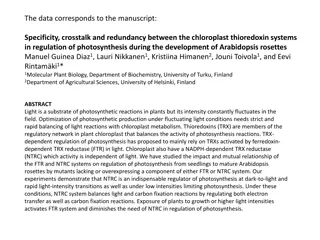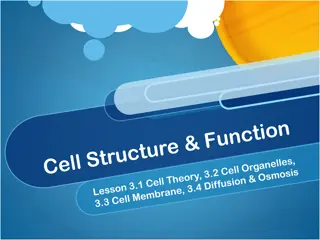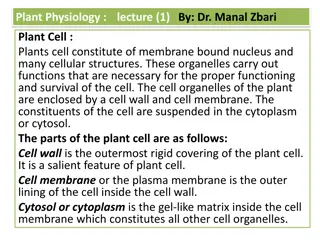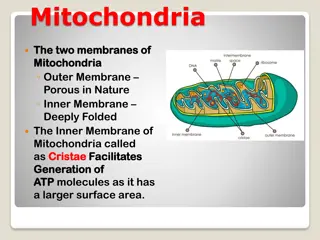Understanding Chloroplasts in Plant Cells
Chloroplasts are vital organelles in plant cells responsible for photosynthesis. They contain pigments like chlorophyll, absorbing light energy and converting it into chemical energy. This process is what makes plants green, as chloroplasts reflect green light. The structure of chloroplasts, including the thylakoid membranes and stroma, plays a crucial role in their function. Differentiating them from other plastids like chromoplasts and amyloplasts, chloroplasts are dynamic structures essential for the survival of plants.
Download Presentation

Please find below an Image/Link to download the presentation.
The content on the website is provided AS IS for your information and personal use only. It may not be sold, licensed, or shared on other websites without obtaining consent from the author. Download presentation by click this link. If you encounter any issues during the download, it is possible that the publisher has removed the file from their server.
E N D
Presentation Transcript
CHLOROPLAST Cell Biology: Lecture 13a
WHY ARE PLANTS GREEN? Different wavelengths of visible light are seen by the human eye as different colors. Gamma rays Micro- waves Radio waves X-rays UV Infrared Visible light Wavelength (nm)
WHY ARE PLANTS GREEN? Plant Cells have Green Chloroplasts The thylakoid membrane of the chloroplast is impregnated with photosynthetic pigments (i.e., chlorophylls, carotenoids).
THE COLOR OF LIGHT SEEN IS THE COLOR NOT ABSORBED Chloroplasts absorb light energy and convert it to chemical energy Reflected light Light Absorbed light Transmitted light Chloroplast
The location and structure of chloroplasts Chloroplast LEAF CROSS SECTION MESOPHYLL CELL LEAF Mesophyll Intermembrane space CHLOROPLAST Outer membrane Granum Inner membrane Grana Stroma Thylakoid compartment Stroma Thylakoid
Chloroplasts It is a type of plastids Plastids: A group of plant and algal membrane- bound organelles that include Amyloplasts, Chromoplasts and Chloroplasts.
Amyloplasts : (Amylo= starch) colorless plastids that store starch; found in roots and tubers. Chromoplasts : (chromo=color) plastids containing pigments other than chlorophyll; responsible for the orange and yellow color of fruits, flowers and autumn leaves. Chloroplasts: (Chloro= green) Chlorophyll-containing plastids which are the sites of photosynthesis Found in eukaryotic algae, leaves and other green plant organs Are lens-shaped and measure about 2 m by 5 m Are dynamic structures that change shape, move and divide.
Ultra structure of chloroplast 1. Chloroplast membrane 2. Stroma or Matrix 3.Grana 4. Lamellae Stroma lamellae Grana lamellae- Thylakoid -chlorophyll- quantasomes 5. Osmiophilic granules 6. Ribosomes 7. DNA & RNA
Chlorophyll is found in the thylakoid membranes Thylakoid membrane---230chl molecules+40-50 carotinoids Thylakoids function in the steps of photosynthesis that initially convert light energy to chemical energy Some thylakoids are stacked into grana Grana : (Singular: granum) Stacks of thylakoids in a chloroplast 3. Stroma: Photosynthetic reactions that convert carbon dioxide to sugar occur in the stroma. Stroma: Viscous fluid outside the thylakoids
Photosynthetic unit -Quantasomes Have two zones- 1. Peripheral zone- contains pigment molecules 2. Middle or Energy zone Chemical components:- Chl. A, chl. B, Beta carotine, vialoxanthin, neoxanthin, plastoquinone a,b,c, vitamin k, phaspholipids, nitrogen, Mn, Fe, Cu etc.
Chemical Composition Protein- 35-55% Lipids-20-30% Carbohydrates- 4-7% Pigments 9-13% Osmiophilic granules Few amount- Nucleic acid, Vitamin K and E, Mg, Fe, Cu, Mn, Zn, P etc. 70s Ribosomes, Enzymes, RNA -5% DNA
Chloroplast DNA: Plastid DNAs are circular duplex molecules with a total length of 45 mm. Non Histone Each plastid consists of 6-30 copies of circular DNAs and most of them are in super coiled state. Based on its genomic size, it has been calculated that each cp DNA molecule can code for about 110-120 proteins.
Chloroplast Pigments Pigments:- Chlorophyll and Carotinoides. 1. Chlorophyll- chl. a,b,c,d,e Bacteriochlorophyll a and b Bacteropviridin Chlorophyll:- a-C55H72O5N4Mg b-C55H72O6N4Mg
2. Carotenoids Carotins Xanthophylls C40H56
Origin of chloroplsat: Endosymbiotic theory Autonoumous theory
